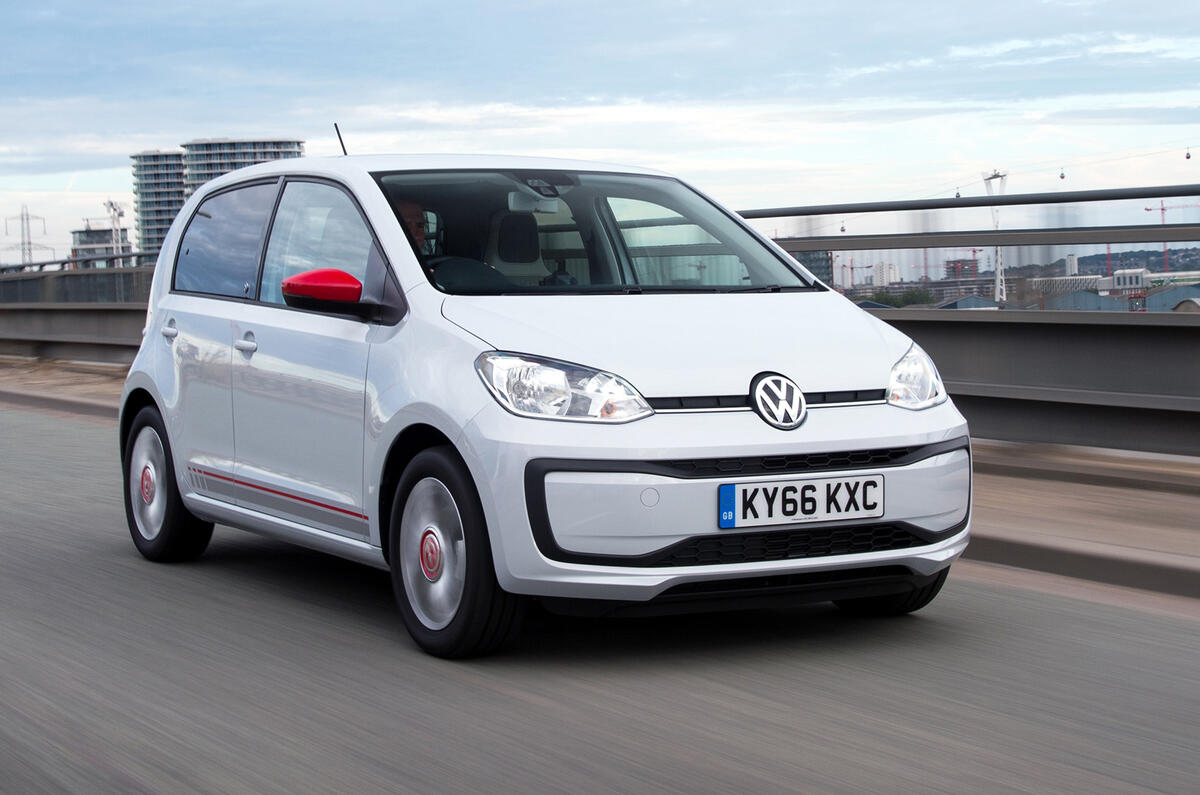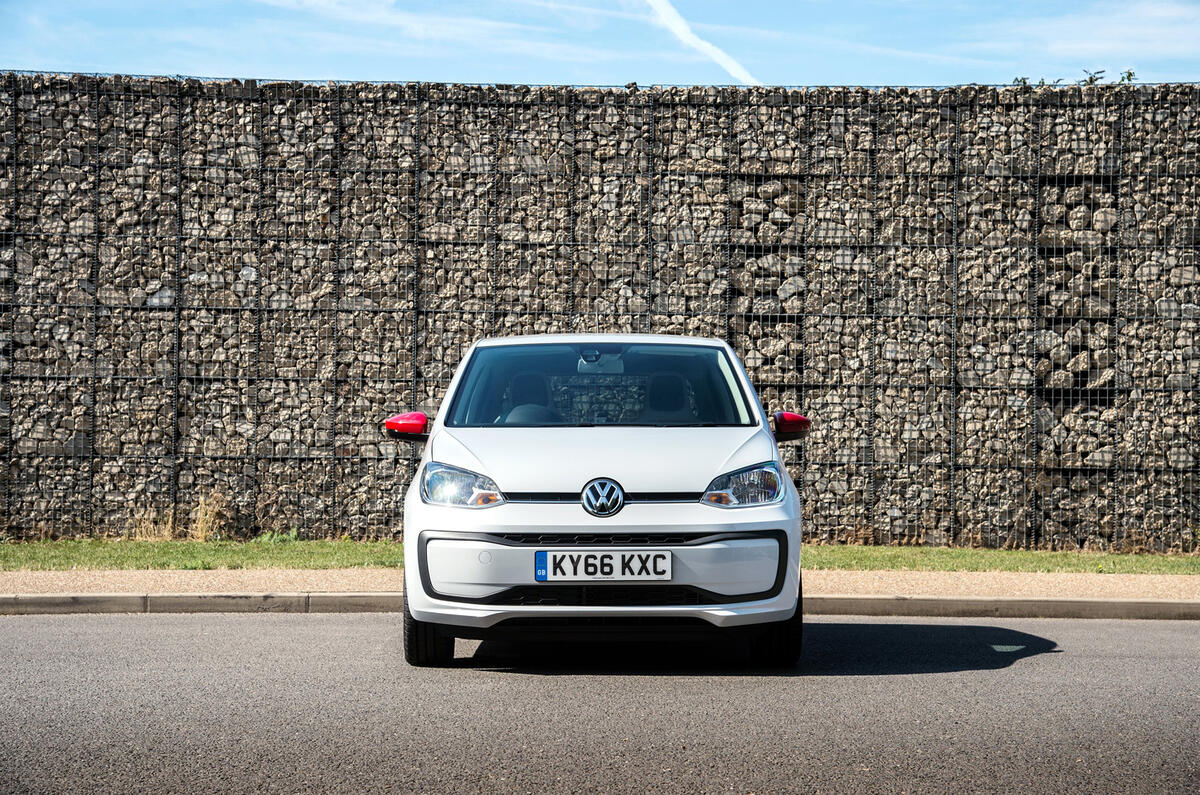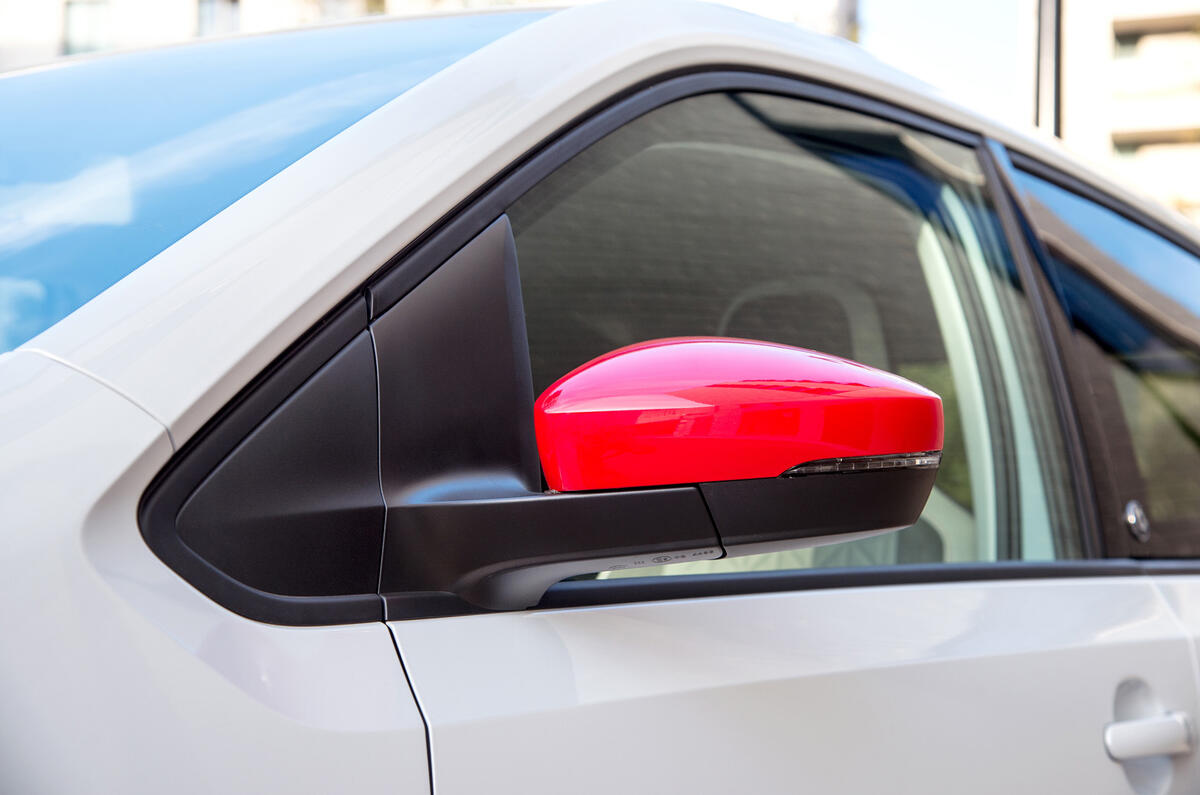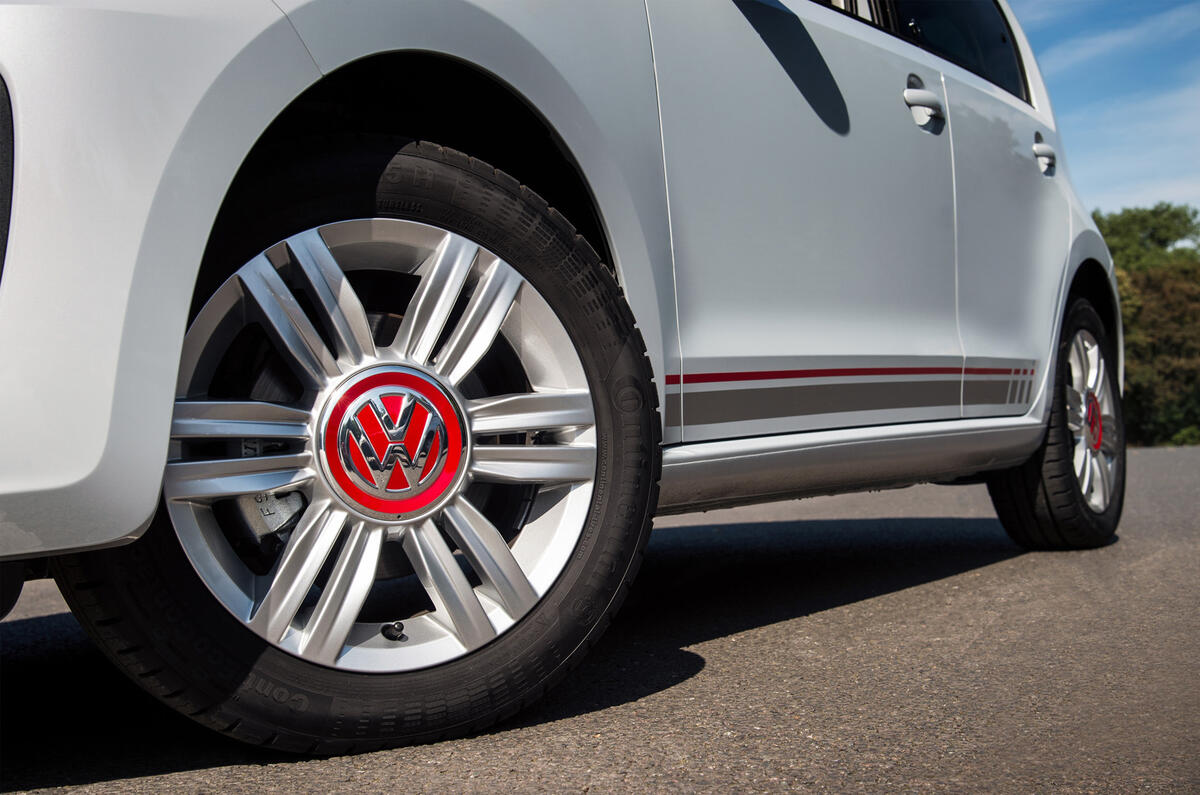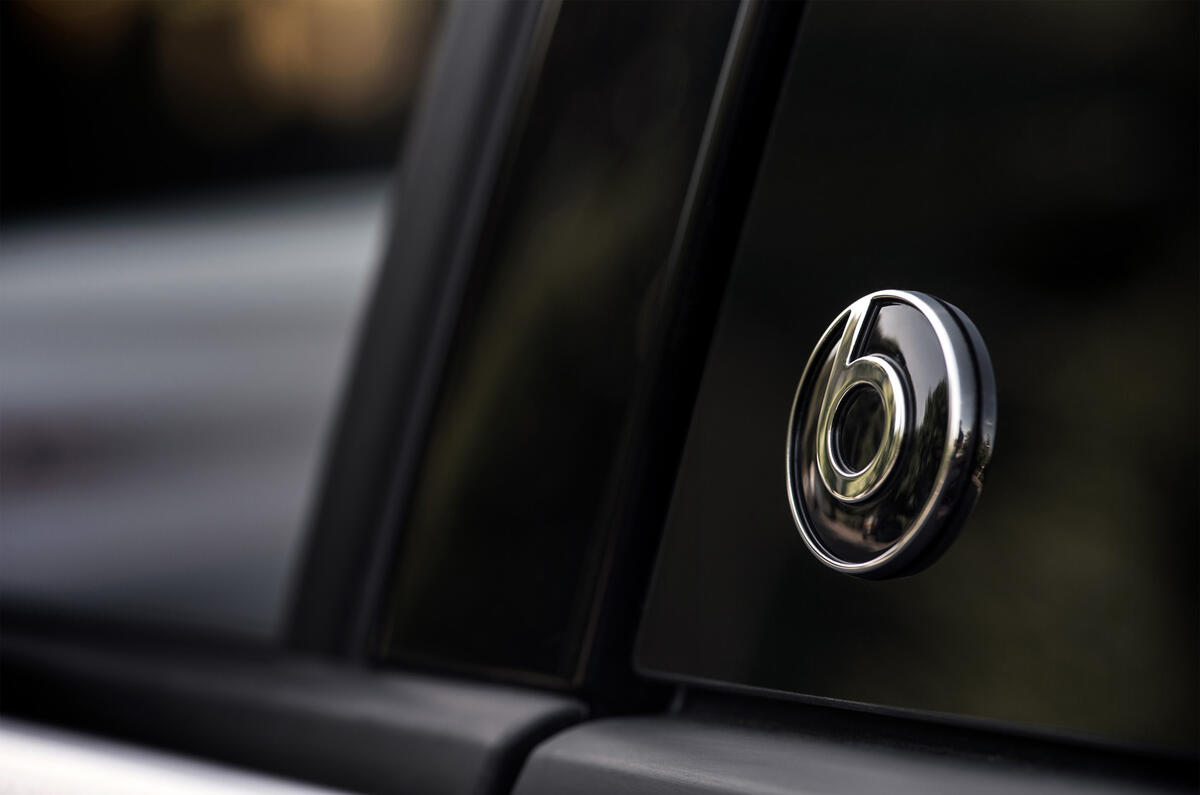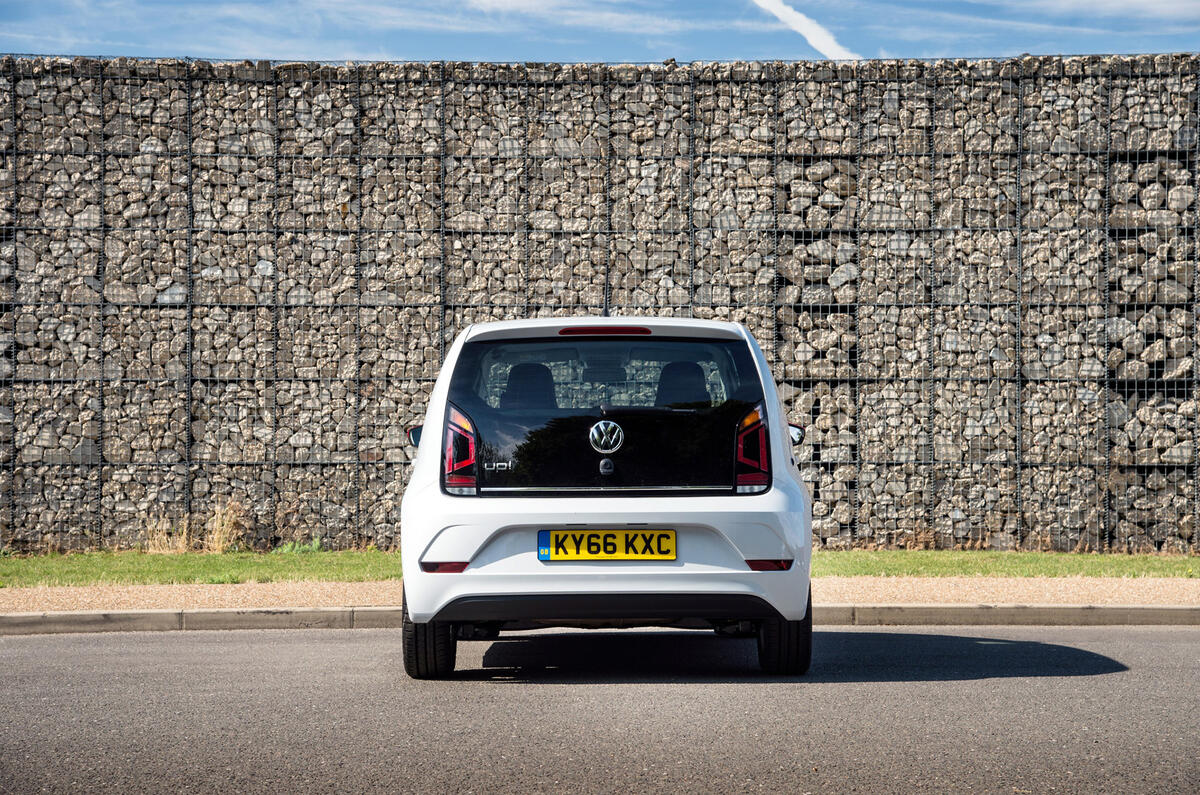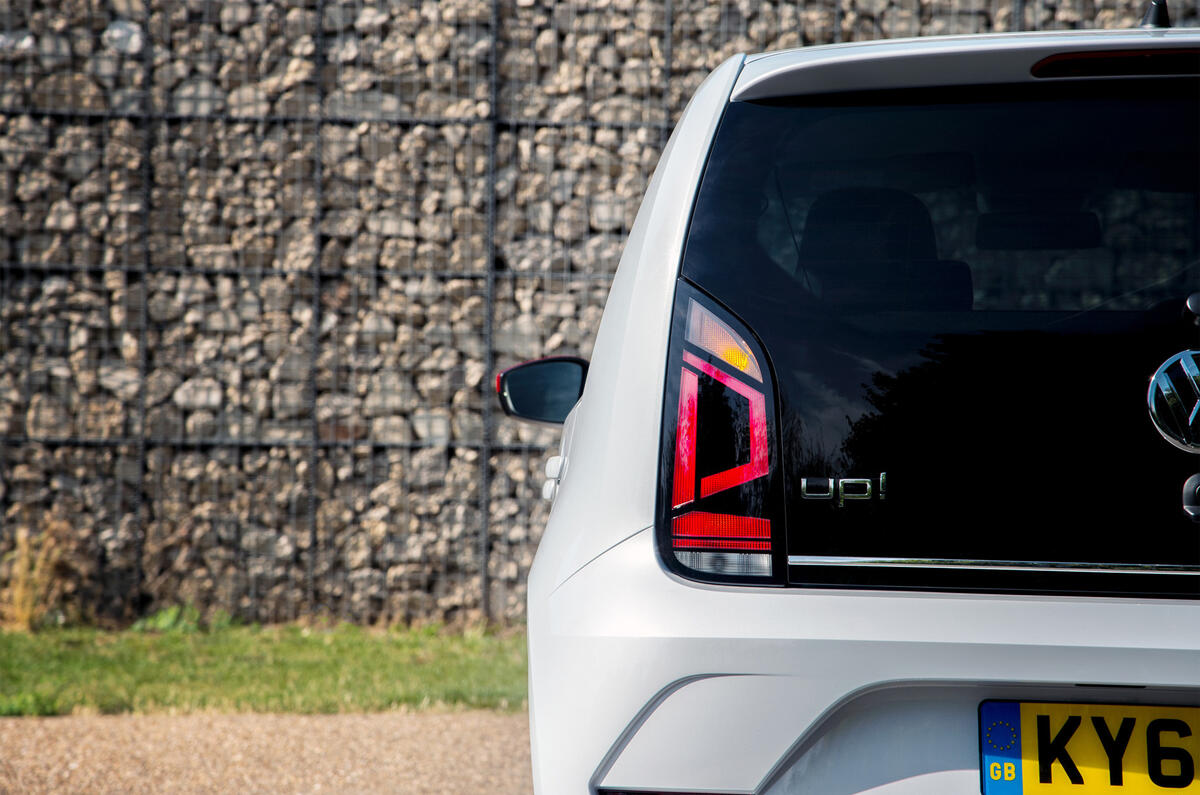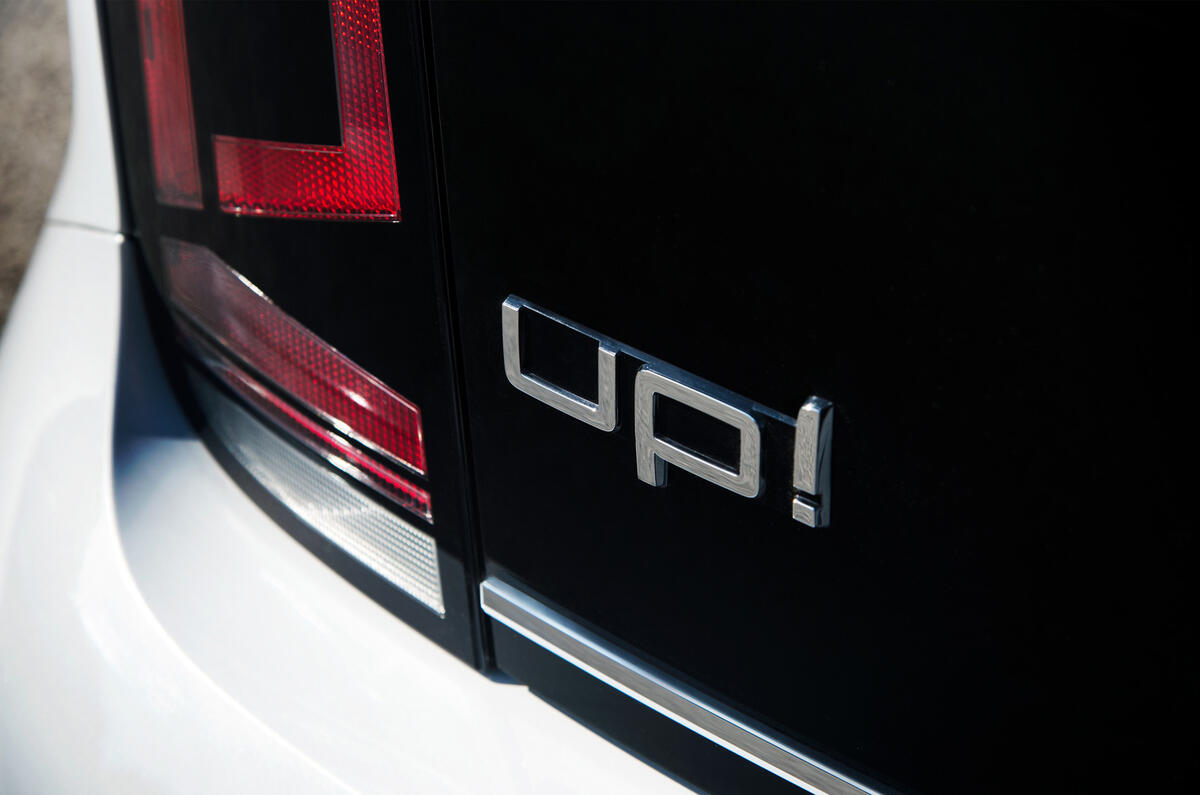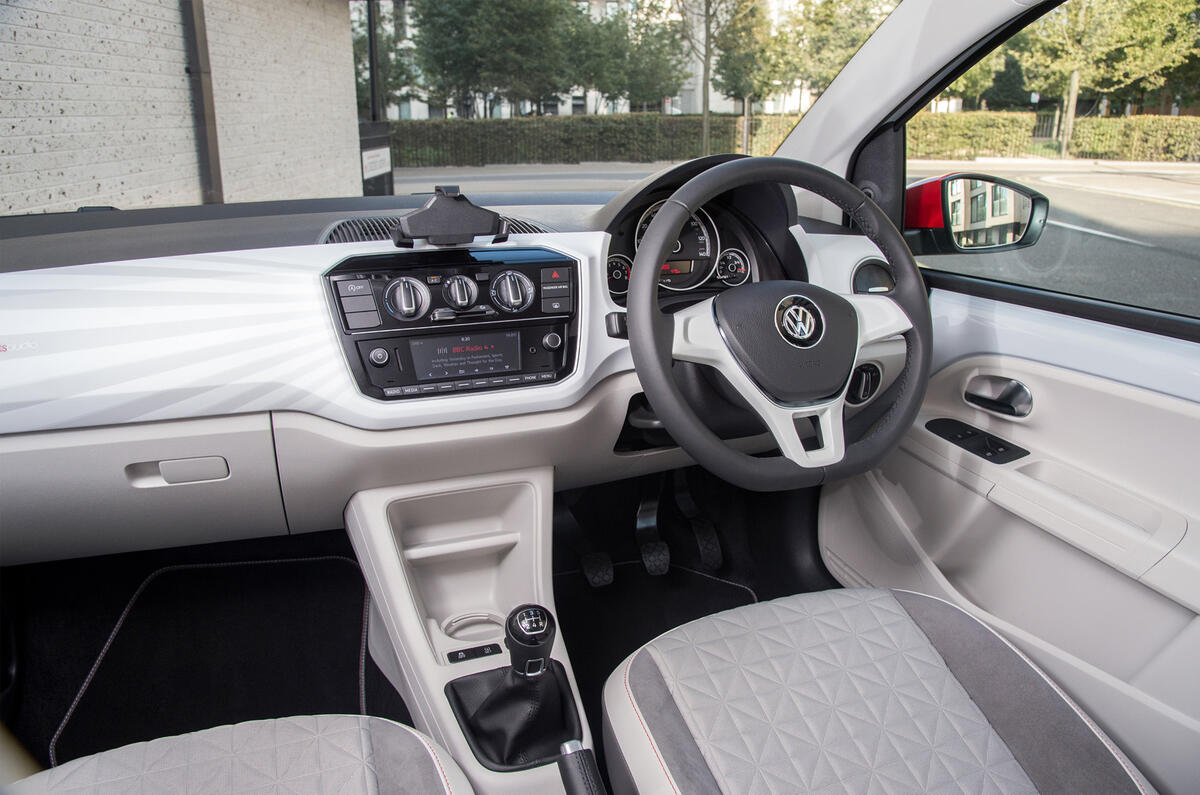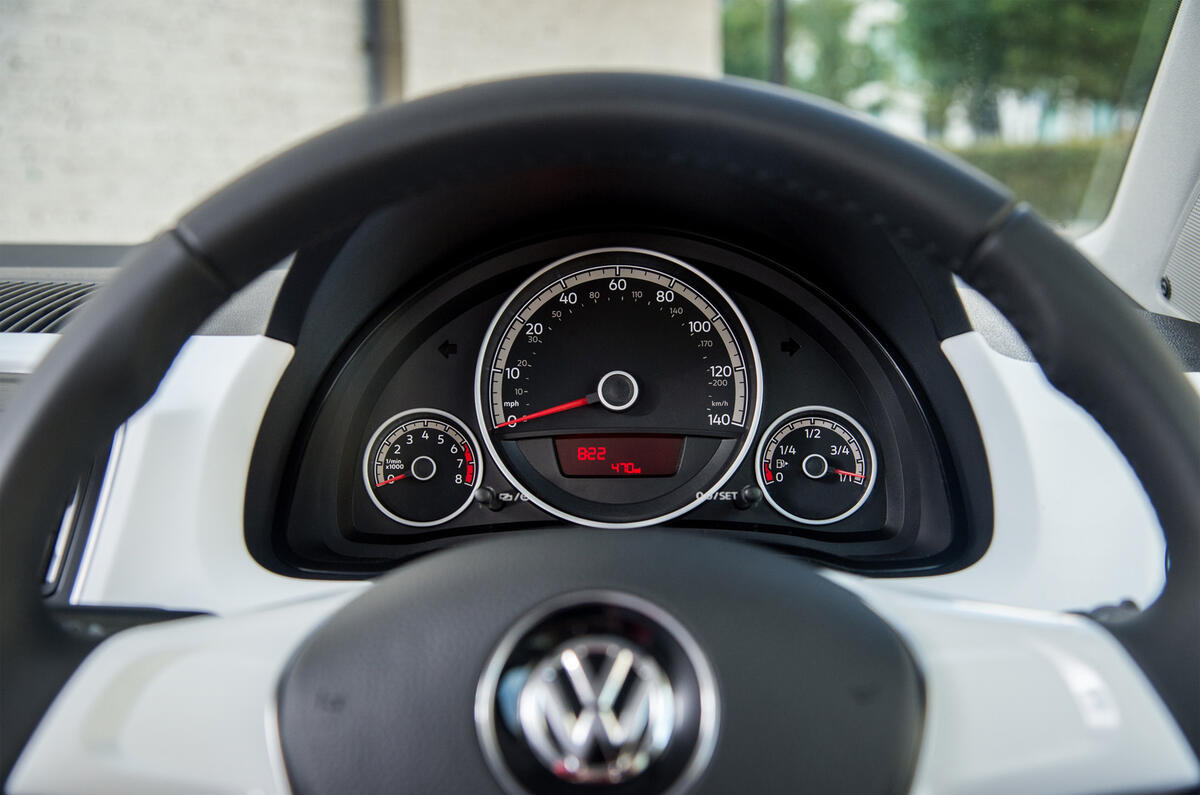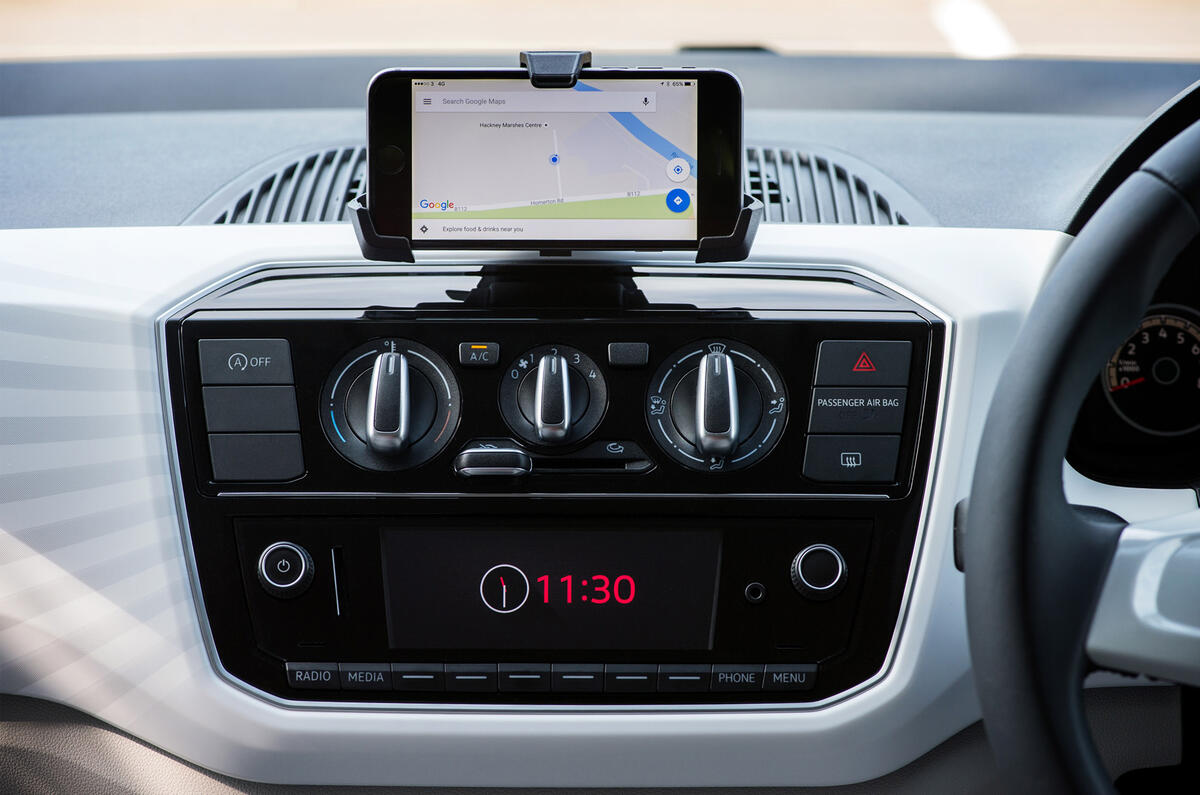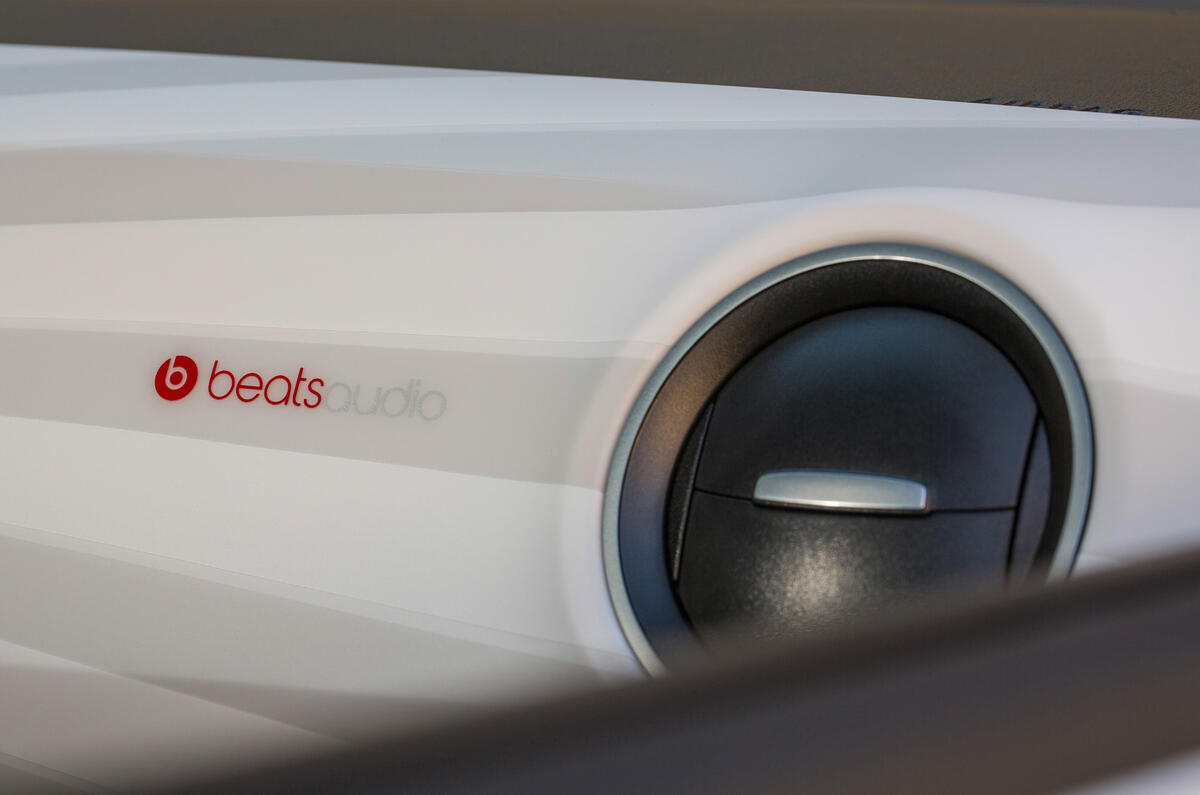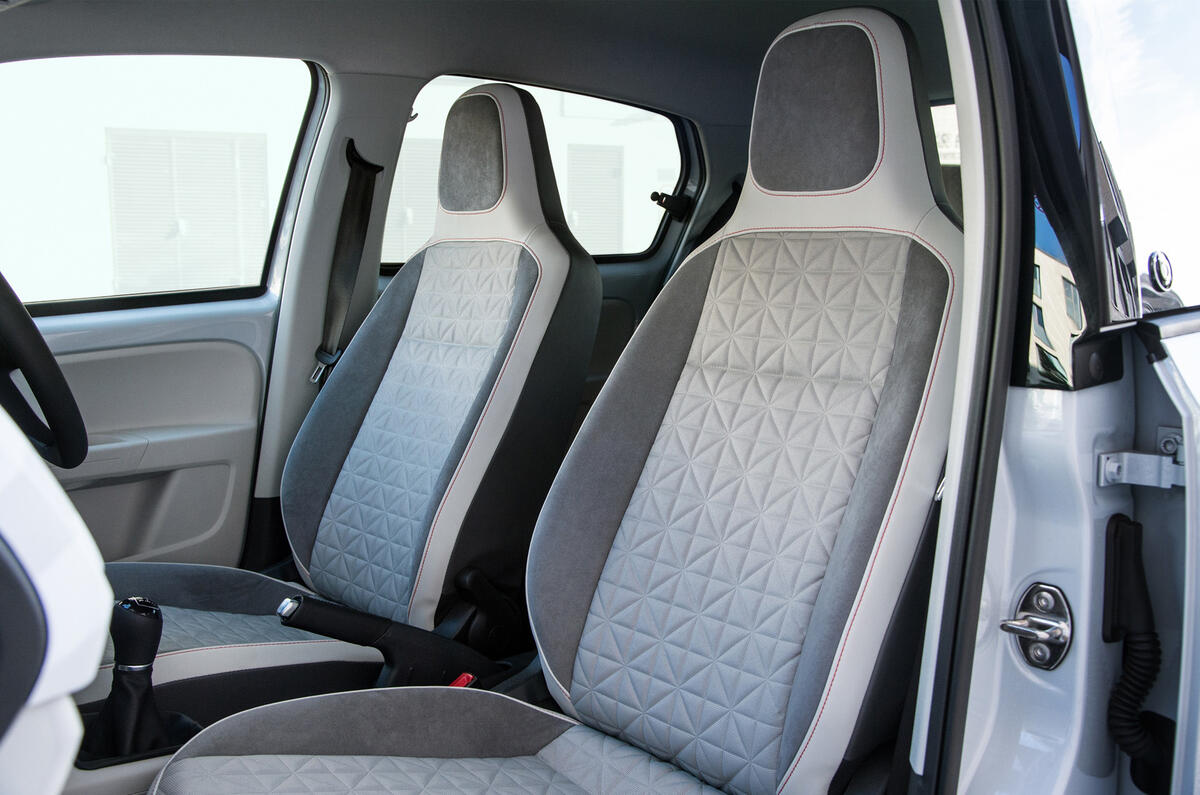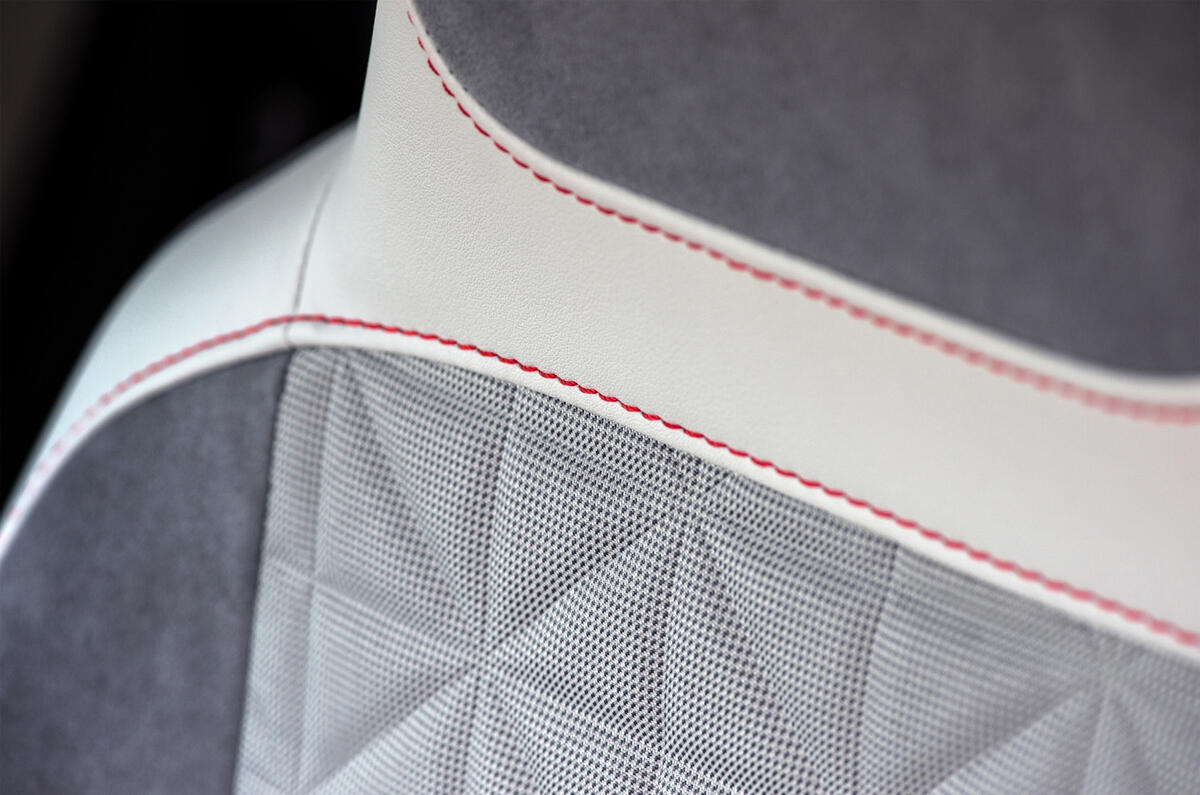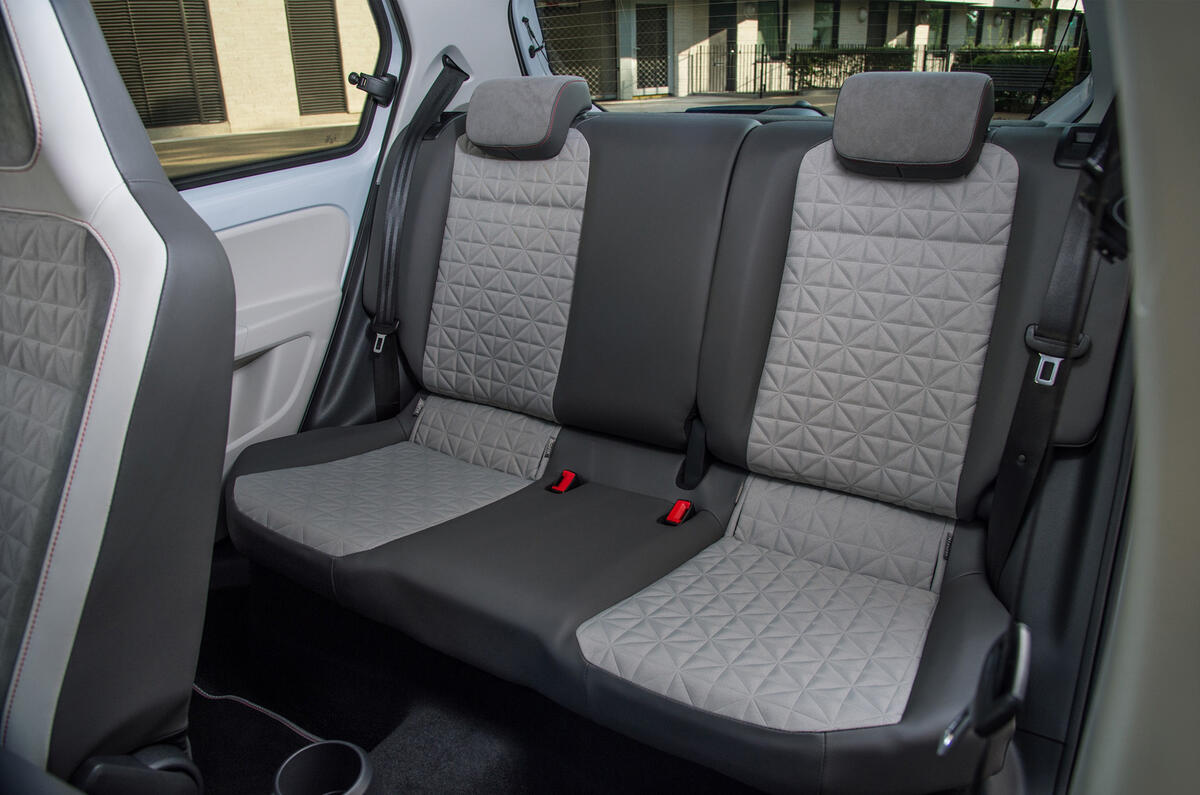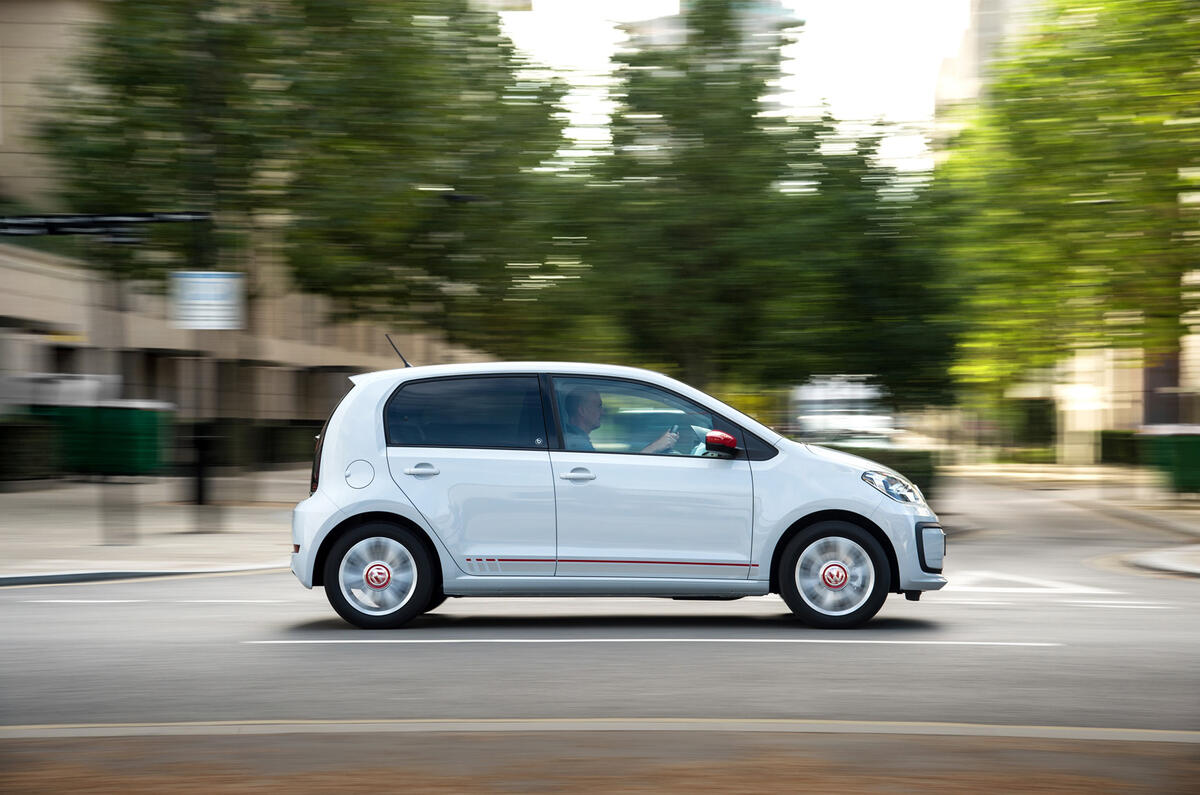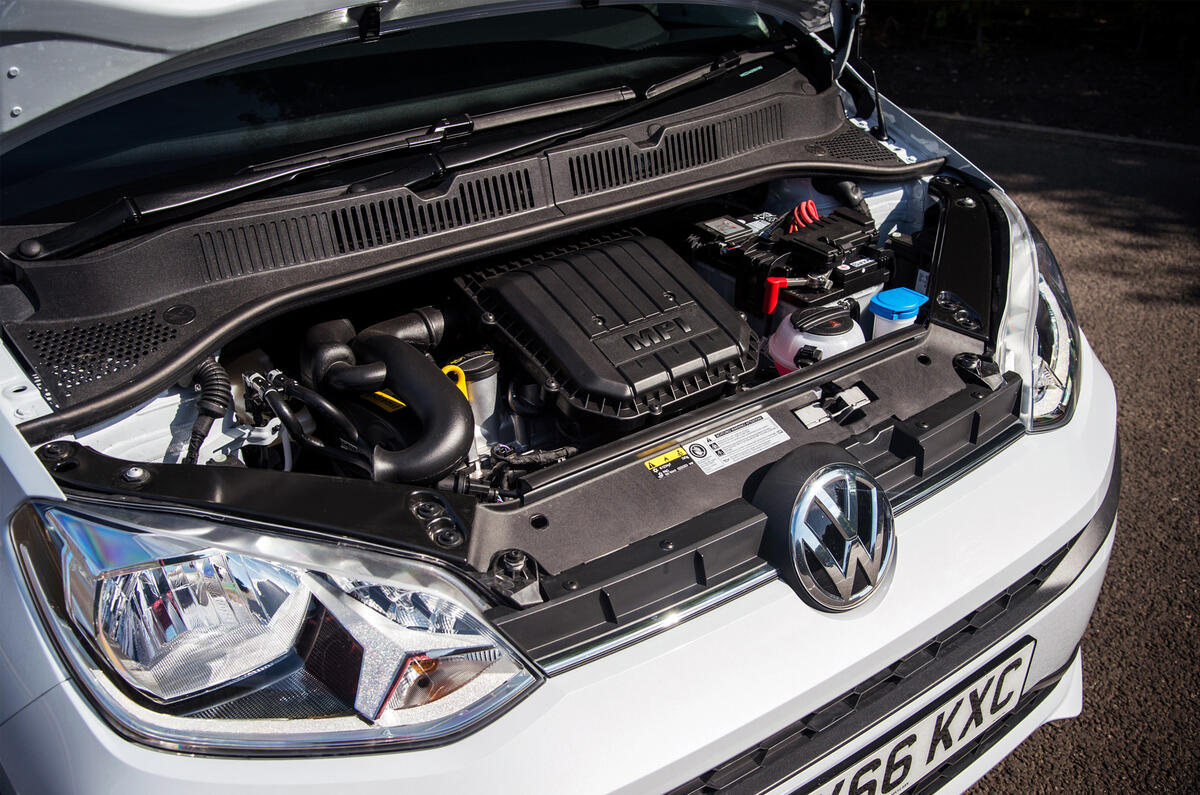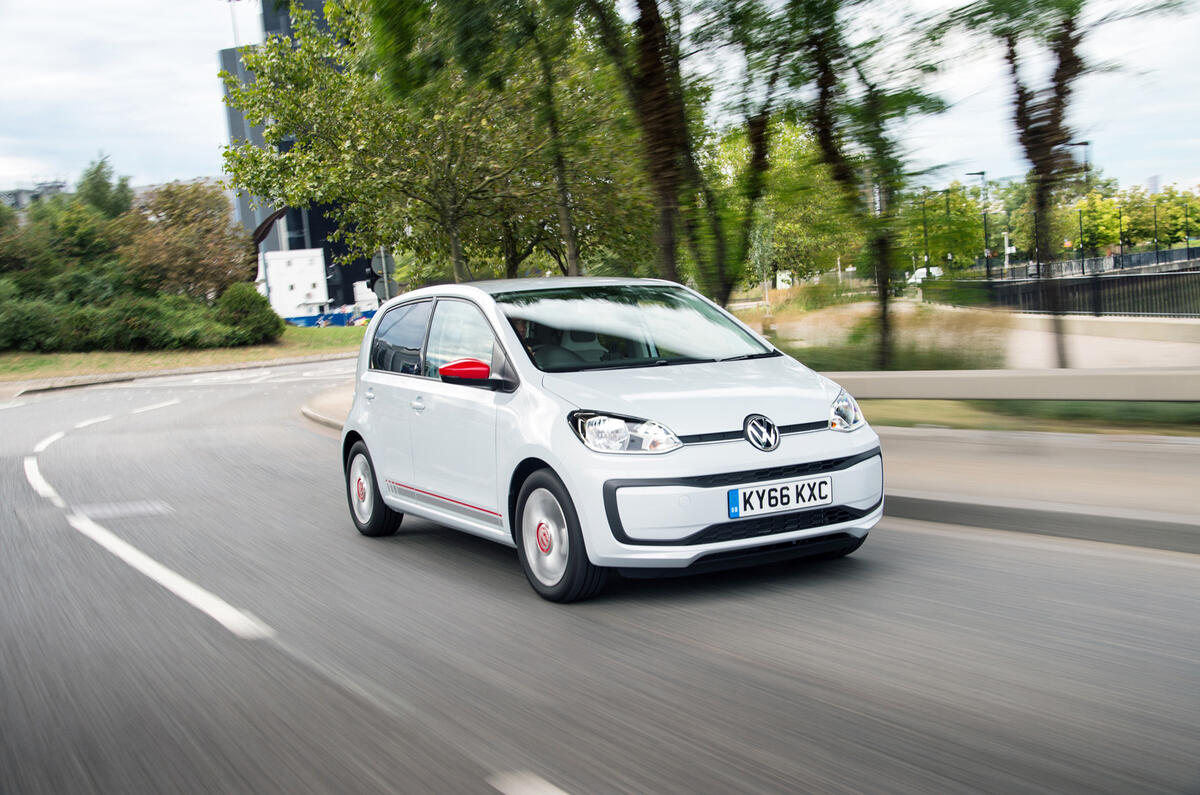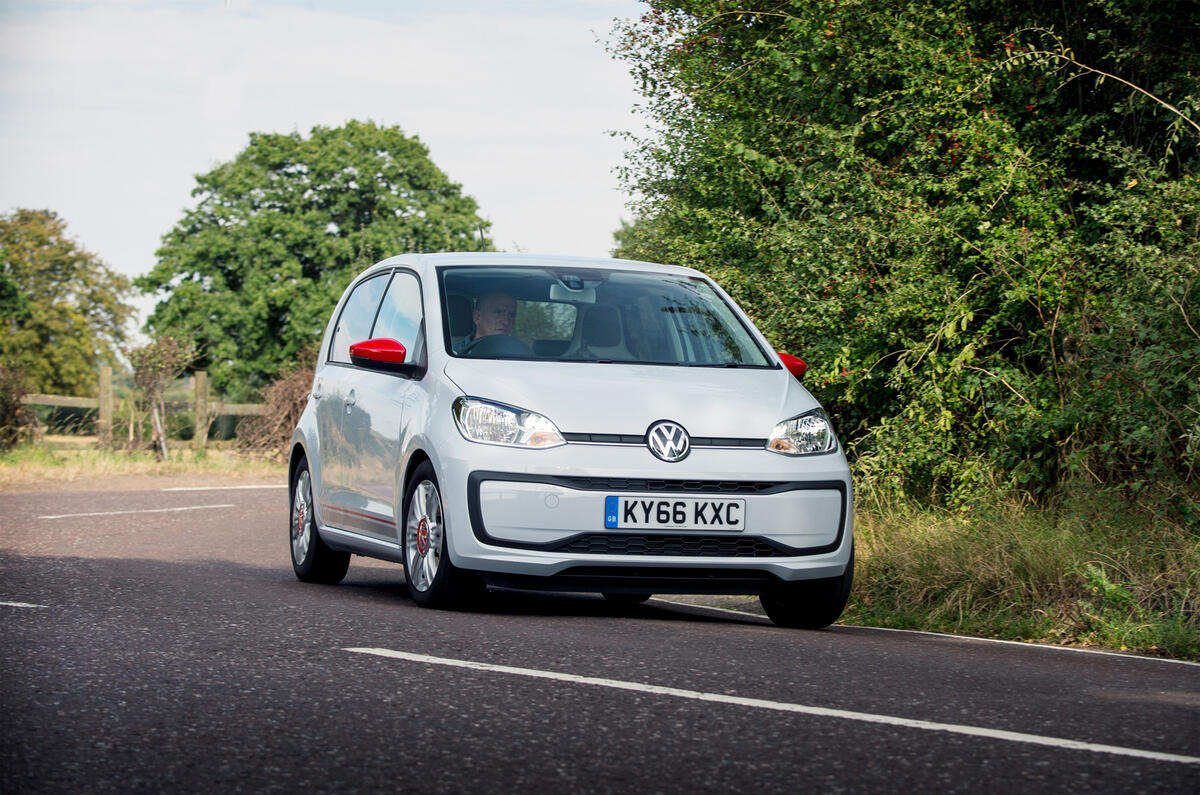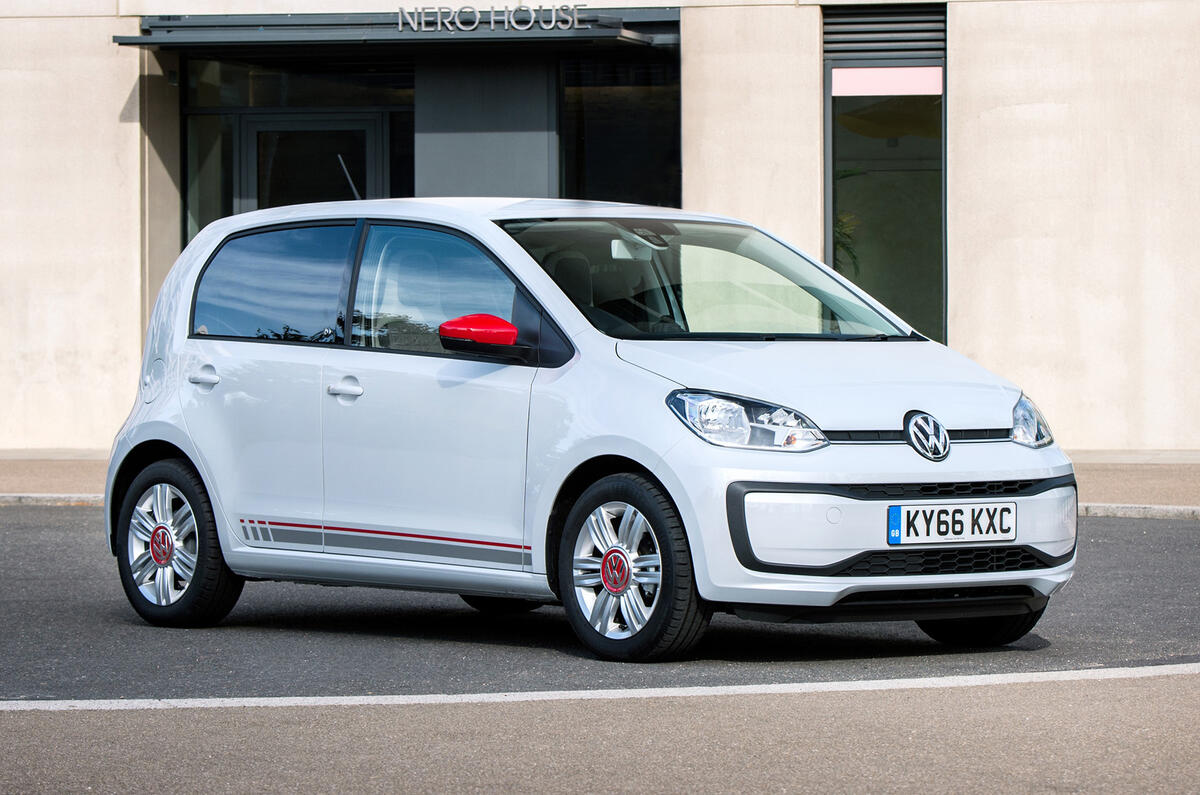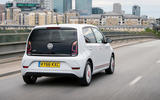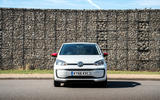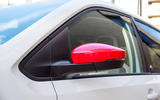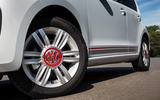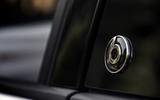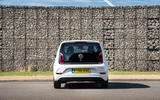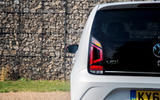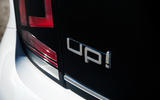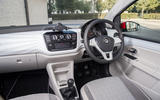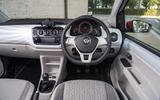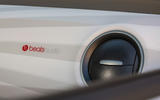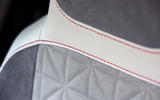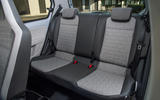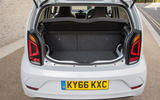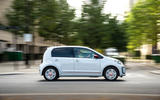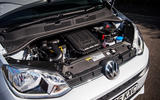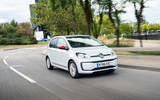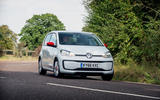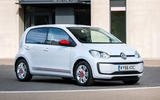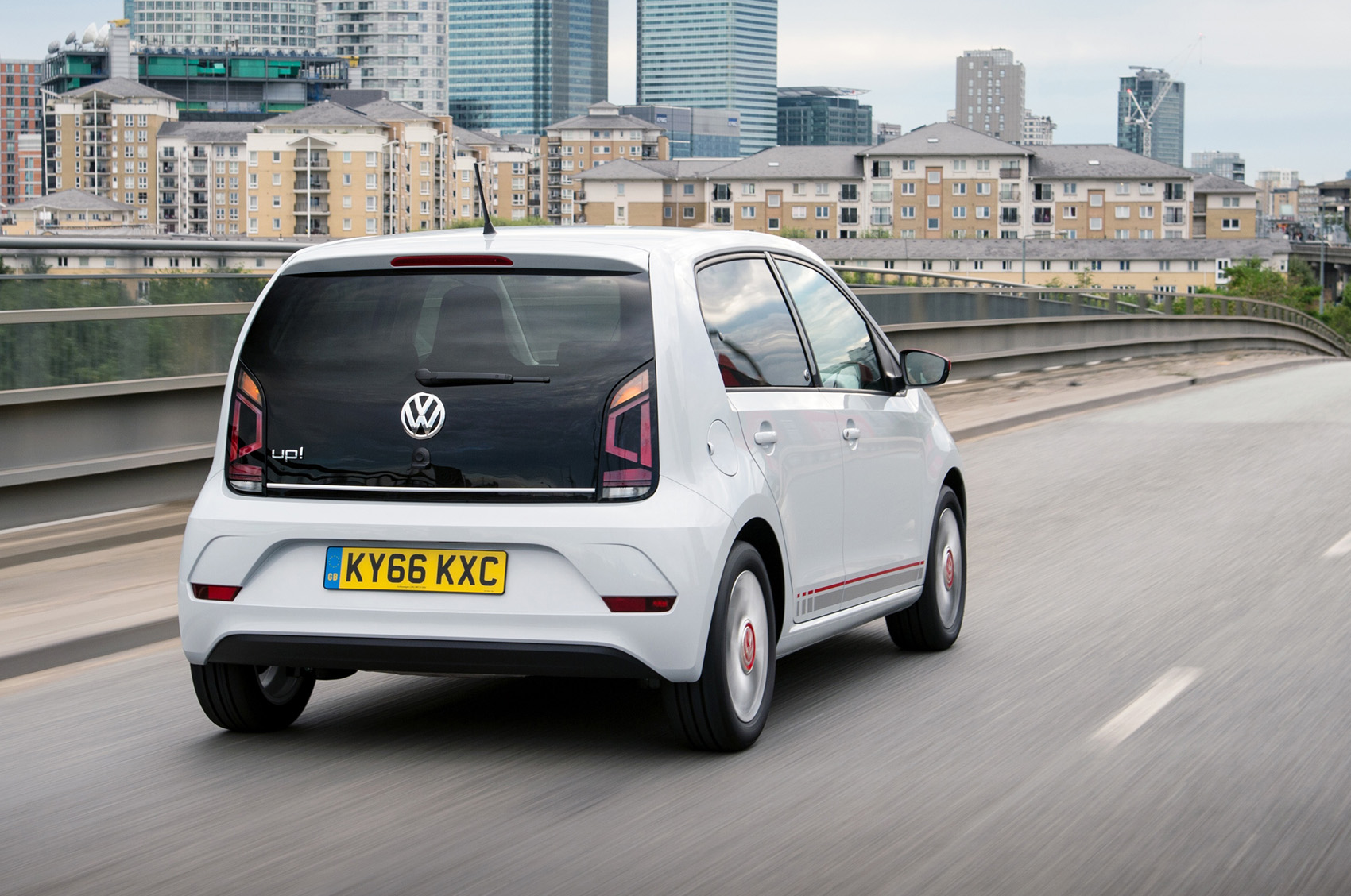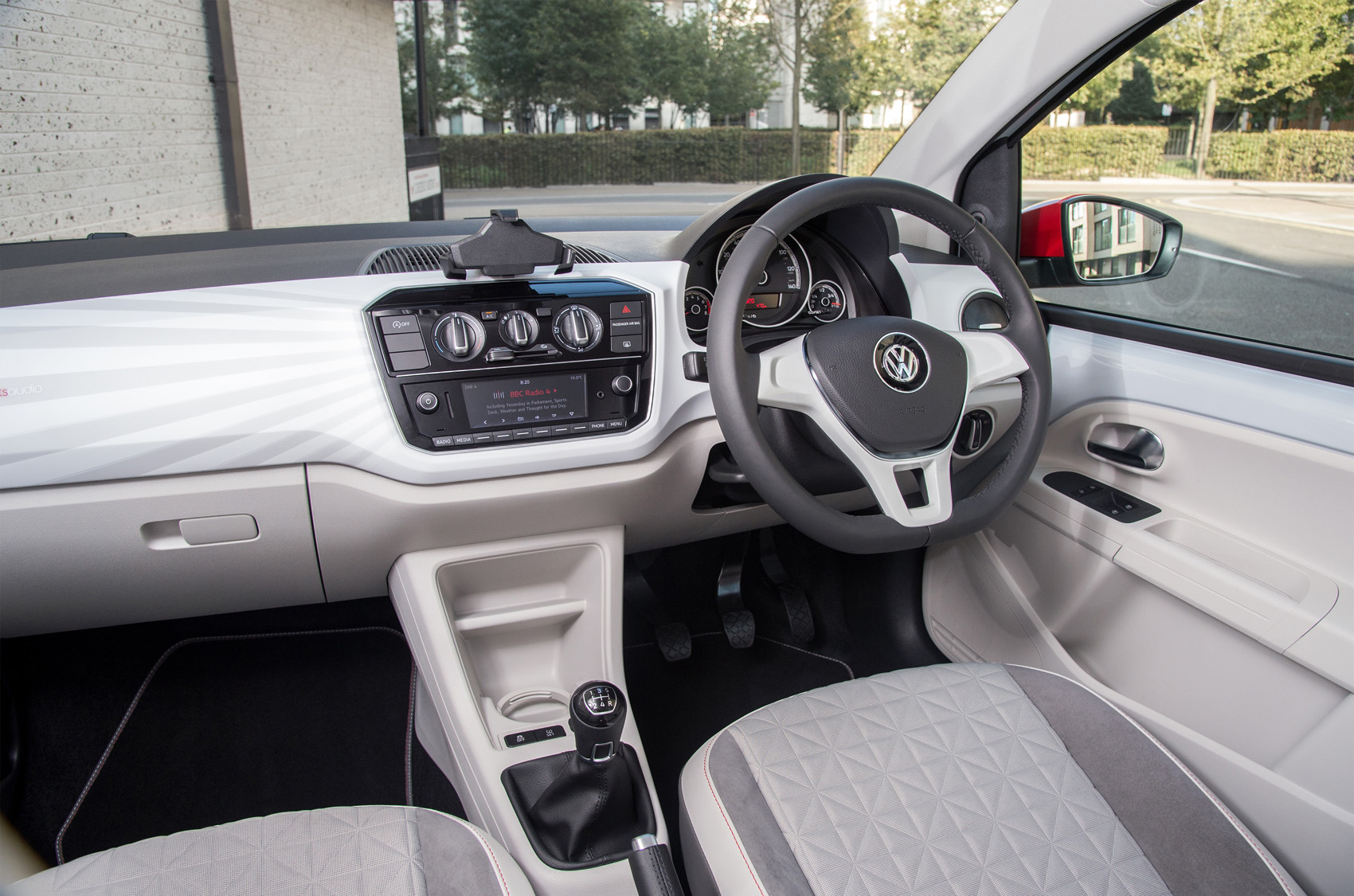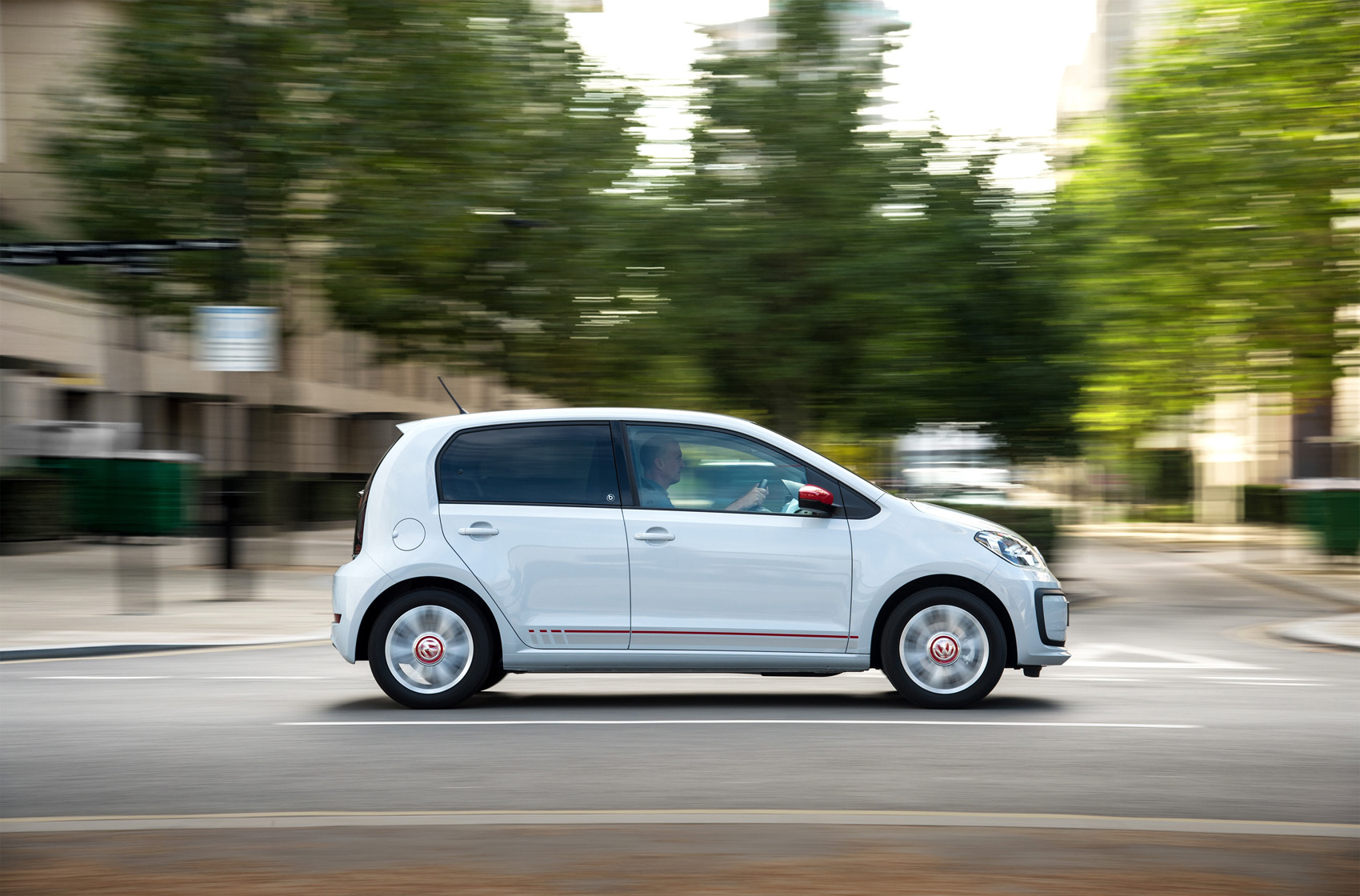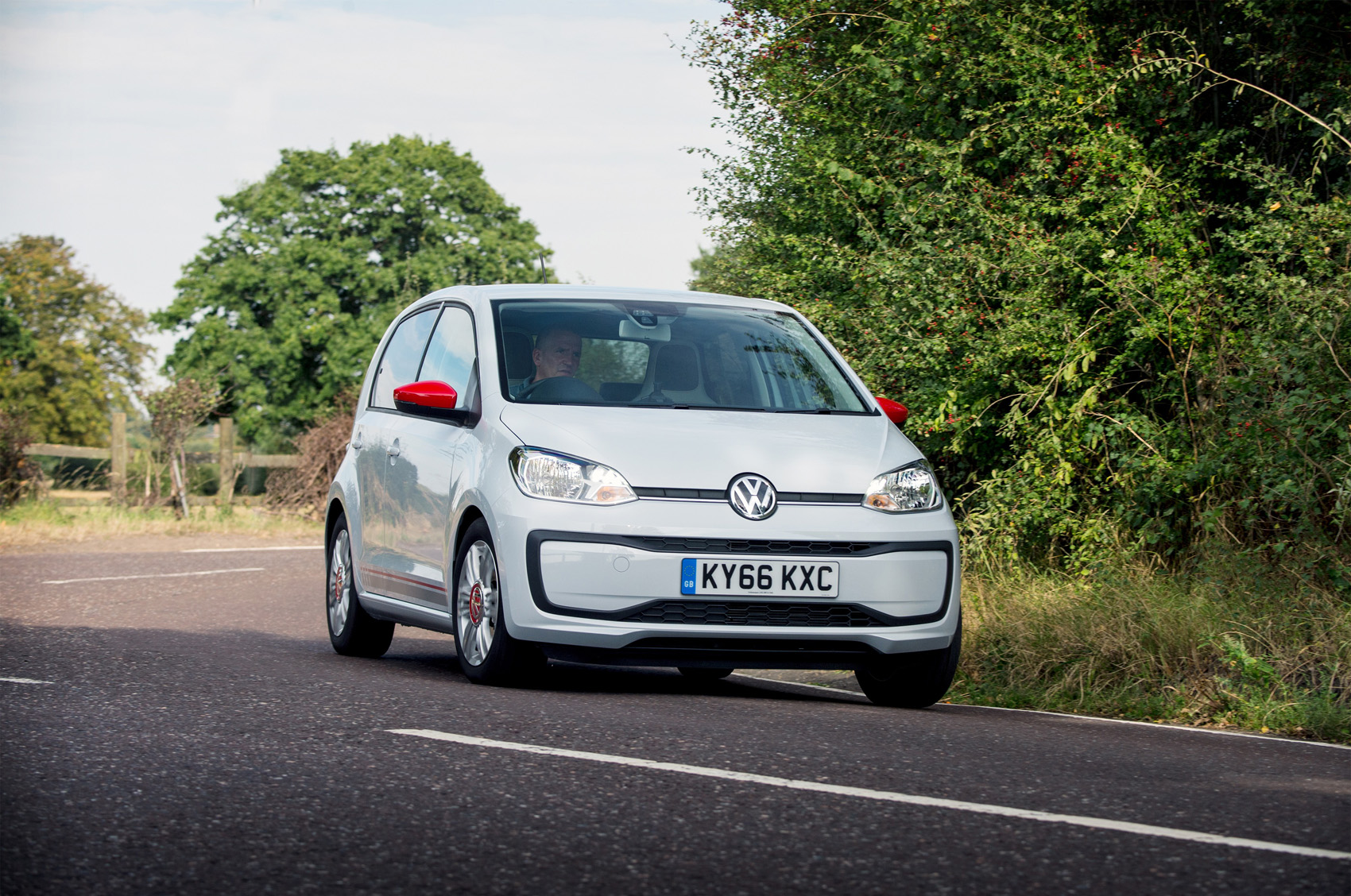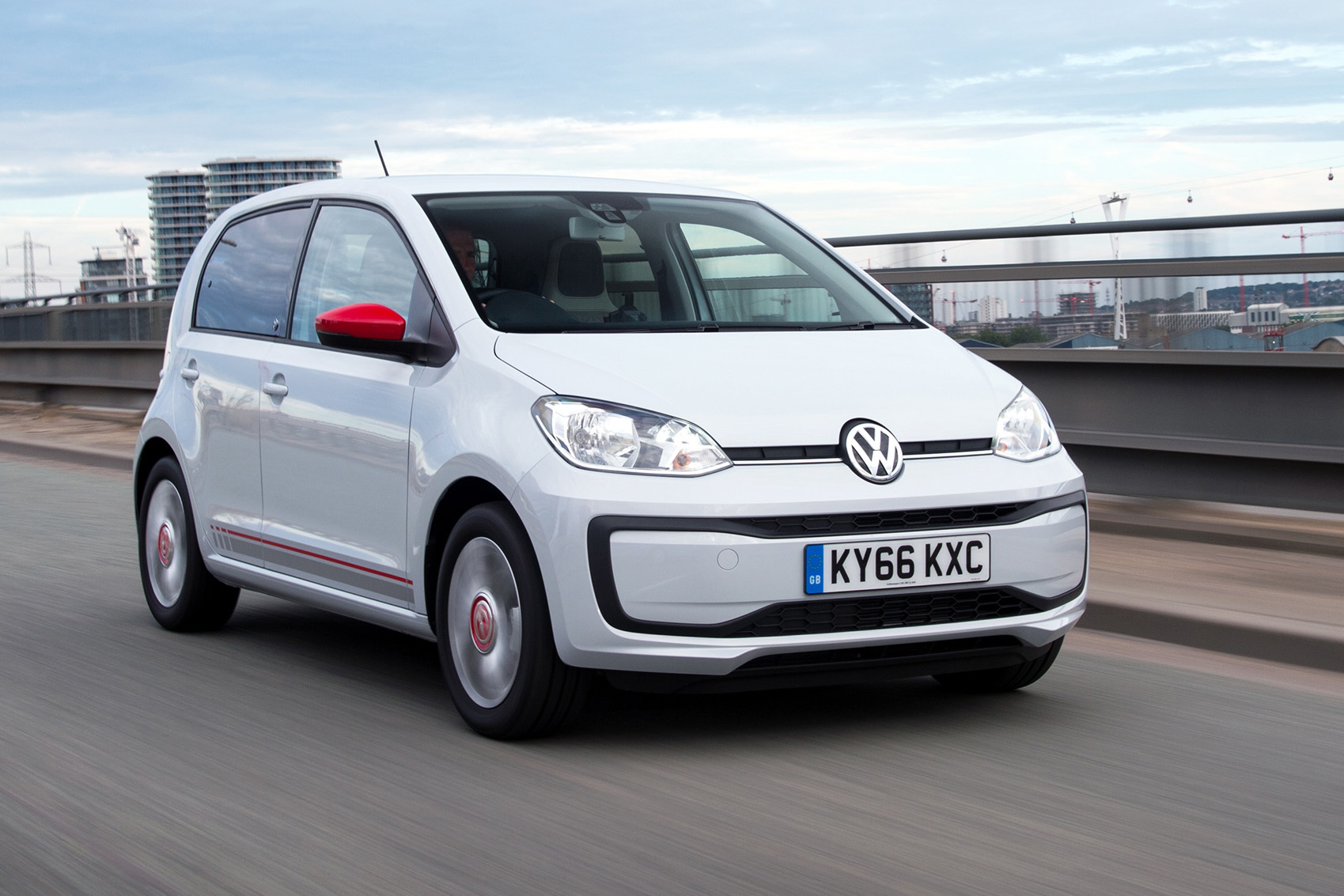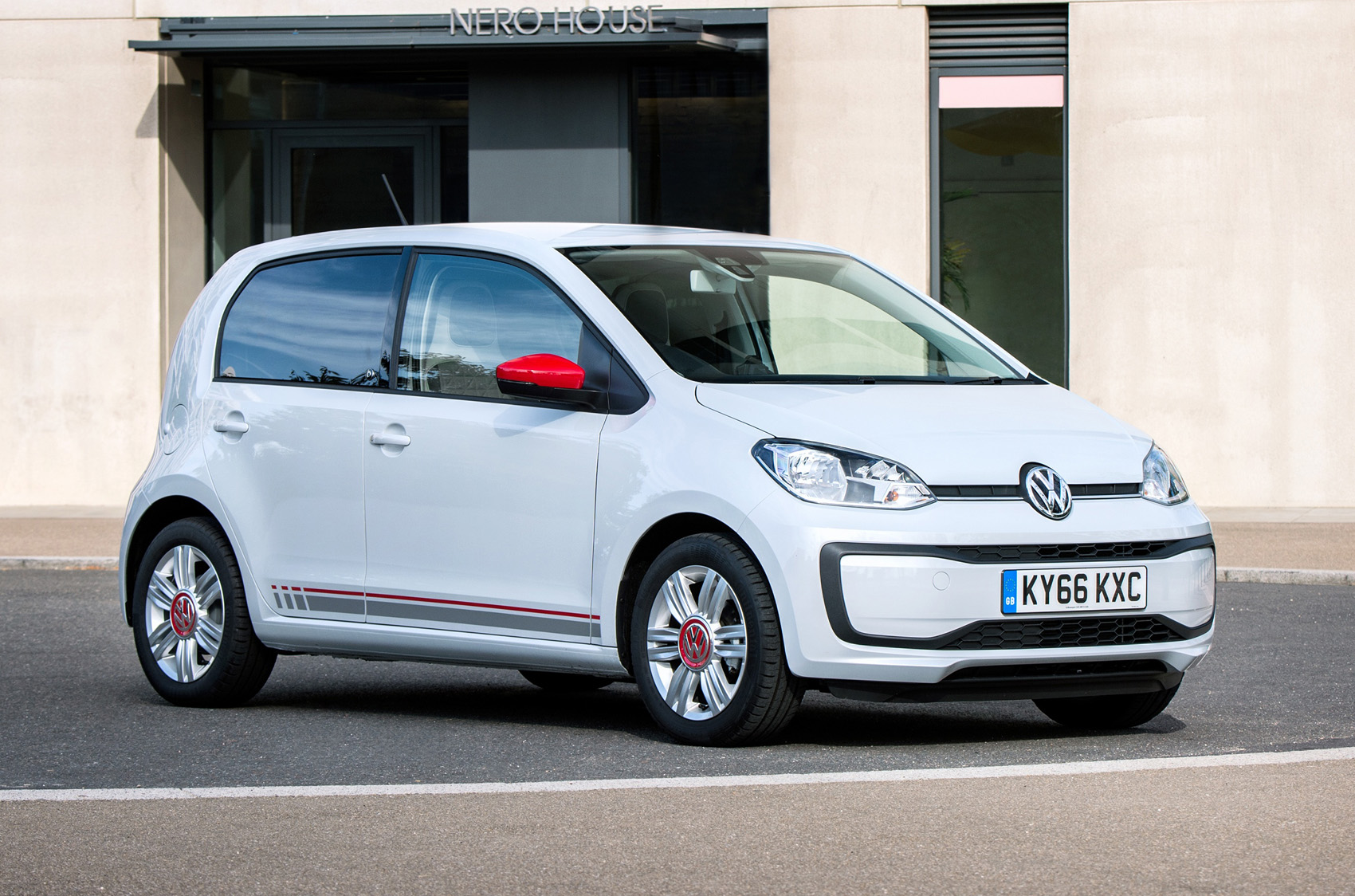Volkswagen's manufacturing infrastructure operates on the basis of shared commonality, so its decision to replace the original concept’s unusual rear-engined set-up with an orthodox transverse front-wheel drive system is understandable. VW argued that the previous layout would have required significant extra investment and limited the Volkswagen Volkswagen Up’s capacity to share in its vast parts bin.
For anyone who found the thought of a small Volkswagen with an engine mounted just ahead of the rear axle appealing, the transformation will seem like a notable dilution of the initial Up formula, but the firm insists that the show car’s spaciousness – one of the main reasons for its unconventional configuration – has been preserved thanks to less conspicuous ingenuity.
Most of it takes place under the bonnet, where a new generation of three-cylinder motor recovers almost 100mm of available real estate from the engine bay. This feat was achieved by installing the cooling system alongside the compact powerplant rather than in front of it. The car also has one of the longest wheelbases in the segment and VW claims that the Up offers exceptional space utilisation of its diminutive 3.54m overall length.
The petrol engine is a lightweight, all-aluminium affair offered with outputs of either 59bhp, 74bhp or a turbocharged 89bhp, though the higher powered engine is only available in top-spec ‘High Up’ and 'Up Beats' trim, while the base motors power the two lower spec models. All are hooked up to the same five-speed manual gearbox, although a five-speed automatic is optional.
For those eco-concious drivers, there's the Volkswagen Volkswagen e-up, which comes with an 81bhp electric motor and a predicted range of 99 miles making it ideal for those with no ambition to stray outside of the city limits.
The Up looks much like the concept, which is to say that it resembles the city car blueprint established by the Toyota Aygo and Citroen C1 in 2005, with a bug-eyed front and glass-hatched rear. Arguably, Volkswagen’s cleaner design language ensures a flush, better-honed three-door figure than its rivals (a five-door variant is detailed below), but in the metal the Up is more derivative than it is daring. The same can be said about the its sister cars - the Seat Mii and Skoda Citigo.
Similarly to the 107/C1/Aygo triplets, the five door Up is not radically different to the less practical option. The door aperture is wide, which allows good access. Space in the back is good for shoulder, elbows and feet but, owing to the short length and low roof of the Up, kneeroom and headroom are tight. Windows that open at the rear edge rather than sliding down may be preferred more by parents than adult occupants.
The 2016 facelift saw some revised changes to the exterior which gives the Up a more defined look, while the headline act of the update was the addition of a turbocharged, three-cylinder 1.0-litre engine which is capable of producing 89bhp.


